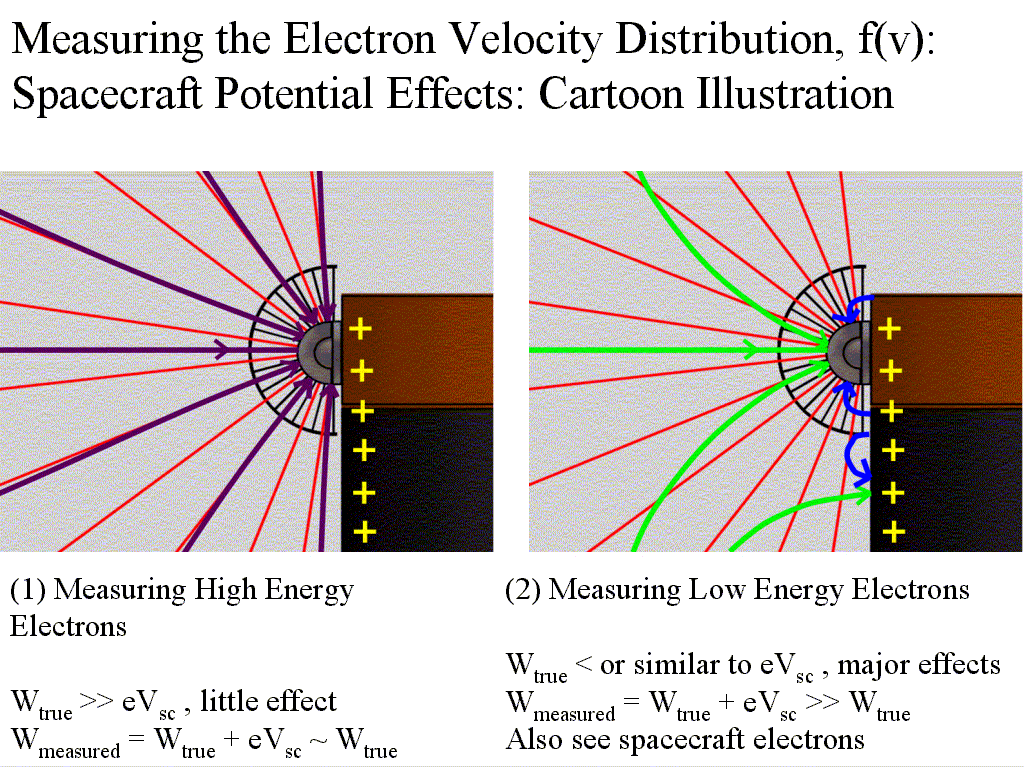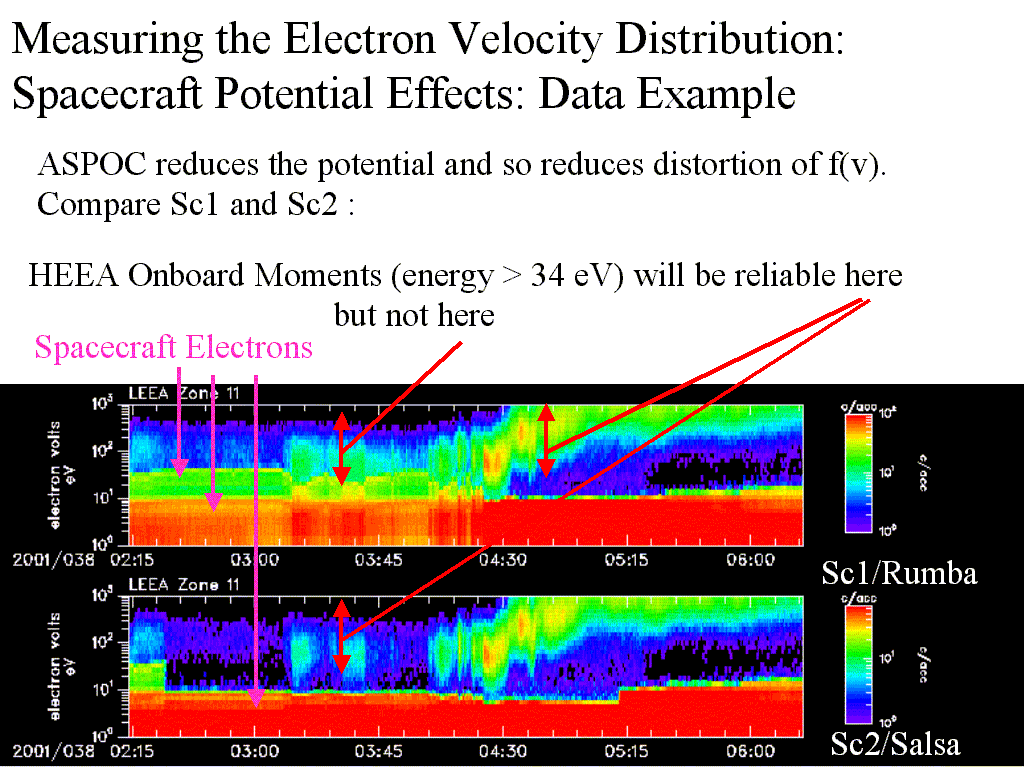
above: sketch showing the trajectories of high and low (relative to the potential) energy electrons in purple and green; and low energy electrons of spacecraft origin (e.g. photoelectrons or secondary electrons) in blue, for the case of a positively charged spacecraft. The red radial lines show the boundaries between the fields of view of the 12 PEACE anodes, and also serve as a reference against which to compare the trajectroies of electrons which are being attracted by the positively charged spacecraft.

above: PEACE data from one PEACE detector, from each of two Cluster spacecraft, with ASPOC in action controlling the potential on Salsa (Spacecraft 2) but not on Rumba (Spacecraft 1). ASPOC is active between about 02:30 and 05:15, and its effects can clearly be seen by comparing the two spectrograms. The green region, bounded at its upper edge by a yellow line, and below by red, is a measurement of electrons of spacecraft origin, and the yellow line marks the spacecraft potential. Typically LEEA moments cover the energy range 10 eV to 1 keV, and without ASPOC the energy range clearly (in this example) contains spacecraft electrons as well as natural plasma electrons. Typically HEEA moments cover the energy range 34 eV to 26 keV. In the example shown, spacecraft electrons are seen at energies near or above 34 eV for at least the 45 minutes, and the potential remains intermittently high until about 04:30 after which it stabilises near 10 or 20 Volts. Thus, HEEA moments may be fairly reliable after 04:30, but are more likely to be affected by variations in potential before then and may even by contaminated by spacecraft electrons in the first hour or so